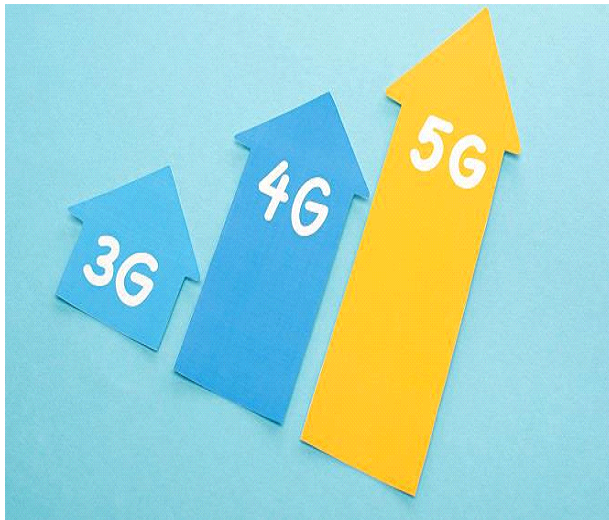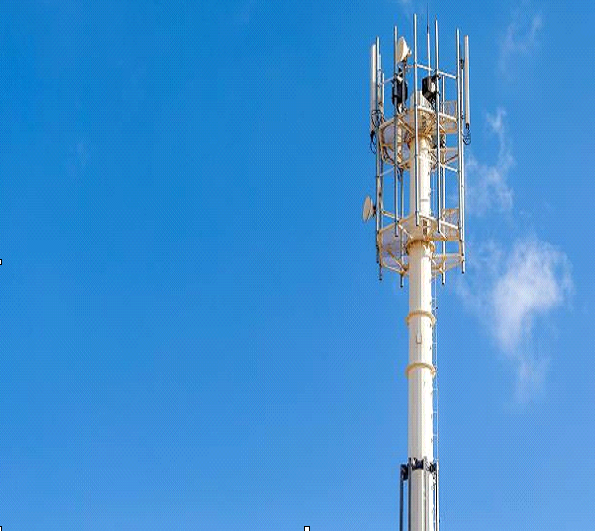
 Data Structure
Data Structure Networking
Networking RDBMS
RDBMS Operating System
Operating System Java
Java MS Excel
MS Excel iOS
iOS HTML
HTML CSS
CSS Android
Android Python
Python C Programming
C Programming C++
C++ C#
C# MongoDB
MongoDB MySQL
MySQL Javascript
Javascript PHP
PHP
- Selected Reading
- UPSC IAS Exams Notes
- Developer's Best Practices
- Questions and Answers
- Effective Resume Writing
- HR Interview Questions
- Computer Glossary
- Who is Who
What is the full form of CDMA?
Introduction
Code Division Multiple Access (CDMA) is a wireless communication technology that enables multiple users to share the same frequency band. Each user in a CDMA system is assigned a unique code that helps in modulating their signal. The code isolates the user's message from other messages in the same frequency band, allowing multiple users to transmit and receive data concurrently without causing any interference.

Although CDMA was initially developed by the military in the 1940s, it was only in the 1980s that it was commercialized and widely used in mobile phone networks. Nowadays, CDMA is utilized in several wireless communication systems, including 3G and 4G cellular networks.
CDMA architecture
CDMA, which stands for Code Division Multiple Access, is a wireless technology that permits numerous users to share the same frequency band at the same time. The structure of CDMA is made up of three main parts mobile stations (MS), base stations (BS), and a network switching subsystem (NSS).
The Mobile Stations (MS)
Also referred to as mobile devices or user equipment, mobile stations are the endpoints of the CDMA network and establish communication with base stations. An MS is equipped with a CDMA radio, an antenna, and a SIM (Subscriber Identity Module) card that stores subscriber information and enables secure communication with the network.
The Base Stations (BS)
Cell sites or base stations are responsible for communicating with mobile stations within a particular geographic area or cell. BS is made up of a radio transceiver, an antenna, and a base station controller (BSC) that manages communication between the base station and the network switching subsystem.
Network Switching Subsystem (NSS)
The Network Switching Subsystem (NSS) has the responsibility of overseeing the entire CDMA network. It comprises three key parts, namely the Mobile Switching Center (MSC), the Home Location Register (HLR), and the Visitor Location Register (VLR). The MSC is in charge of facilitating communication between different CDMA cells and linking the CDMA network to external networks. The HLR is where user information, such as the mobile station's phone number, current location, and service profile, is stored. On the other hand, the VLR stores temporary user information while the mobile station is roaming outside its home network.
CDMA applications
CDMA has been used for various applications in the field of telecommunications, such as
Mobile communication Mobile technology heavily relies on CDMA in cellular networks for catering to mobile users' voice and data needs. This technology facilitates multiple users to use the same frequency channel through assigning unique codes to each user, ensuring uninterrupted connectivity for everyone.
Wireless local area networks (WLANs) WLANs utilize CDMA technology to enable fast transmission of data over limited areas.
Satellite communication CDMA technology is employed in satellite communication systems for transmitting voice, data, and video. It enables the effective utilization of the restricted frequency spectrum that is accessible for satellite communication.
Military communication CDMA technology finds its application in military communication systems, where it ensures safe and dependable communication during warfare. The technology's encryption and decryption techniques enable secure communication by preventing unauthorized access to sensitive information.
Navigation systems CDMA technology is applied in worldwide navigation satellite systems, such as GPS, to furnish precise timing and location details to its users without any omissions.
Machine-to-Machine communication (M2M) M2M communication systems utilize CDMA technology to facilitate communication between devices, allowing them to exchange data automatically, without any human involvement.
Internet of Things (IoT) In IoT systems, CDMA is utilized for enabling communication between devices and facilitating wireless data exchange.
CDMA Challenges and Future
Over time, CDMA technology has undergone significant advancements and has been widely adopted for various purposes. Nevertheless, it still confronts certain difficulties, and its prospects are influenced by particular variables.
Challenges
Interference The performance of CDMA signals can deteriorate due to interference caused by other signals. It is important to ensure that all signals are properly regulated to avoid any negative impact on the CDMA signals.
Complexity The development, execution, and maintenance of CDMA networks can be intricate and demand extensive technical proficiency and knowledge.
Capacity Despite the fact that CDMA has the ability to provide large capacity, it may experience constraints in regions with high population density and greater demand.
Security Security threats like hacking, eavesdropping, and jamming can pose a risk to CDMA systems. It is important to consider these potential vulnerabilities when implementing and managing CDMA technology.
Future
5G and beyond According to the original text, CDMA is a crucial technology for 3G and 4G networks, and it will maintain its significance in 5G networks and future networks as well.

IoT and M2M The use of CDMA technology is applicable in the field of IoT and M2M applications where wireless communication is essential and needs to be secure and dependable.
Smart cities The development of smart cities is on the rise, and CDMA technology has the potential to facilitate a range of applications, including but not limited to traffic management, public safety, and energy management. It is an important tool for these purposes.
Hybrid networks CDMA technology can be incorporated into networks that blend various wireless technologies to offer uninterrupted coverage and improved efficiency without any missing information.
Conclusion
CDMA is a wireless communication method that permits multiple users to share a frequency band by allocating distinct codes to each user. CDMA has numerous benefits over other wireless technologies, including improved call quality, increased capacity, and superior security. One of the primary advantages of CDMA is its capability to decrease interference, leading to better call quality and a reduction in dropped calls. CDMA also allows more users to access the network simultaneously, resulting in greater capacity than other wireless technologies. Furthermore, CDMA uses unique codes to verify and authenticate users, providing an extra layer of security.
FAQs
Q1. What are the disadvantages of CDMA?
Compared to other wireless communication technologies like LTE, CDMA demands more intricate technology and infrastructure, leading to higher implementation costs. Additionally, CDMA offers lower data rates.
Q2. What are some examples of CDMA networks?
Verizon Wireless and Sprint are among the CDMA networks in the United States, while KDDI and SoftBank are examples of such networks in Japan.
Q3. Is CDMA still used today?
Although CDMA technology is still in use currently, it is gradually losing popularity due to the emergence and adoption of newer and more advanced wireless communication technologies like 5G and LTE.

